Craving More Connection? Turn a Part of Your Home Into a ‘Third Place’ (Part Two)

Third places have long been defined as being the ‘in-between’ places that are neither work nor home. But as we explored in our previous article, 4 Reasons Why Third Places Are Fading & How We Can Save Them, third places are slowly vanishing, leaving a lasting impact on our well-being and how we gather.
As many of you may know, our home renovation journey initially sparked the thesis and creation of The Gourmet Host. Completed in several smaller parts over the past 10 years, the changes we made transformed our unused or underused spaces into third places where we have since hosted hundreds of gatherings.
Third places as social circle expanders
We noticed that these home transformations and the subsequent gatherings had not only expanded our inner circle, but our extended circle, too.
Three-Tiered Social Architecture:
- Inner Circle: Direct connections (friends, family, frequent collaborators)
- Extended Circle: Friends of friends who have public profiles
- Discovery Circle: Public content from the broader community

Now, as seasoned hosts, we are curious what it would look like to expand what we call our “discovery circle”, AKA other people in our community we have no social ties to. With the popularity of apps like TimeLeft, which connect you with 5 strangers to have dinner with, it’s clear that we’re all craving a bit more spontaneous interaction beyond our inner circle.
Fascinated by the impact that gatherings have had on our lives, we decided to share this guide on how to turn parts of your home into a third place (including a glimpse into some of our results!).
How to turn a part of your home into a third place
1. Find new use for unused spaces
Look at your home like one of those celebrities from HGTV looks at an 80-year-old suburban bungalow—are there any areas that you don’t (or barely) use?
Perhaps it’s that dead corner right in between your kitchen and your patio that you end up tossing your winter boots and shovel into after clearing the path.
Or the “storage garage” that has slowly turned into a mountain of junk.
Or the den with grandma’s old rocking chair, just gathering dust.
The idea is to look at your home with a critical eye and determine whether you would be willing to give a part of it a new life.
2. Make it as self-sufficient as possible.
To make your third place as attractive and functional as possible, you’ll want to be intentional with the design, stocking it with all the essentials for a casual hangout.
For furnishing & layout, we recommend:
- Open-concept design
- Plenty of counter space
- Large, multi-seat furniture (benches, corner couch, etc.)
We also recommend stocking it with:
- Light snacks (popcorn, crackers, fruit)
- Beverages (soda, beer, wine, coolers, coffee, tea)
- Napkins & cutlery
- Games & magazines
Of course, you decide how much you want to invest in this, and the type of ambiance you want to create.
To start, ask yourself what the purpose of the gatherings would be.
If you’re a sports fan, maybe you consider putting in a TV for watching games.
If you’re a tea connoisseur, maybe you invest in a tea set and a kettle for hot water.
If you’re a cocktail buff, maybe you invest in setting up a mini bar, stocked with your favorite liqueurs and homemade syrups.
Bonus points if you can manage to have a kitchen, mini fridge, or sink inside!
One of our latest renovation projects included rebuilding our detached double-car garage into a party room and a Halloween setup for the kids in our community.
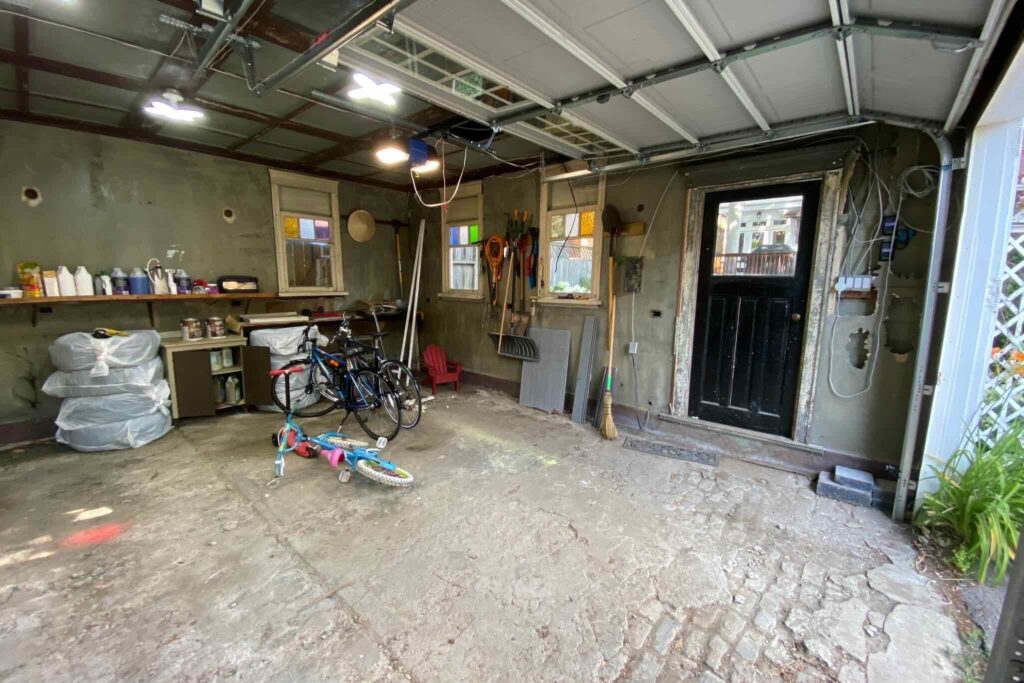
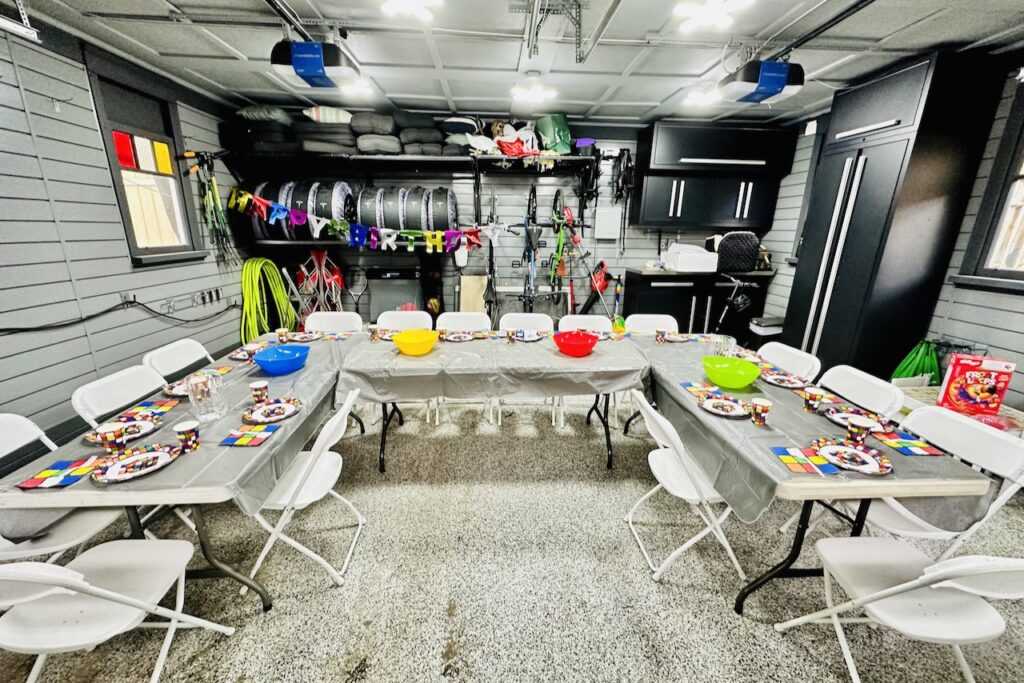
Check out our guide on how to host a spooktacular Halloween party for kids and adults.
However, we know that having a detached/separate room for your third place won’t be possible for everyone, which is why you should…
3. Embrace room dividers & outdoor space
Don’t have an extra room to spare? That’s okay! In fact, it’s just as easy to turn existing rooms and spaces into a third space by inviting some intentional design (and using room dividers when necessary).
Perhaps this looks like designing a separate dining area for guests, or even a hosting corner or nook that’s stocked with all the things you need to commune without entering full-blown host mode.
Perhaps you just want to open up your outdoor space for spontaneous hangouts during the warmer months—it’s up to you!
For us, the first major transformation was the weed-infested backyard, which we turned into our first third-place. We specifically designed it for entertaining, equipping it with a 7-person couch, 8-person table, fire pit, and surround sound.
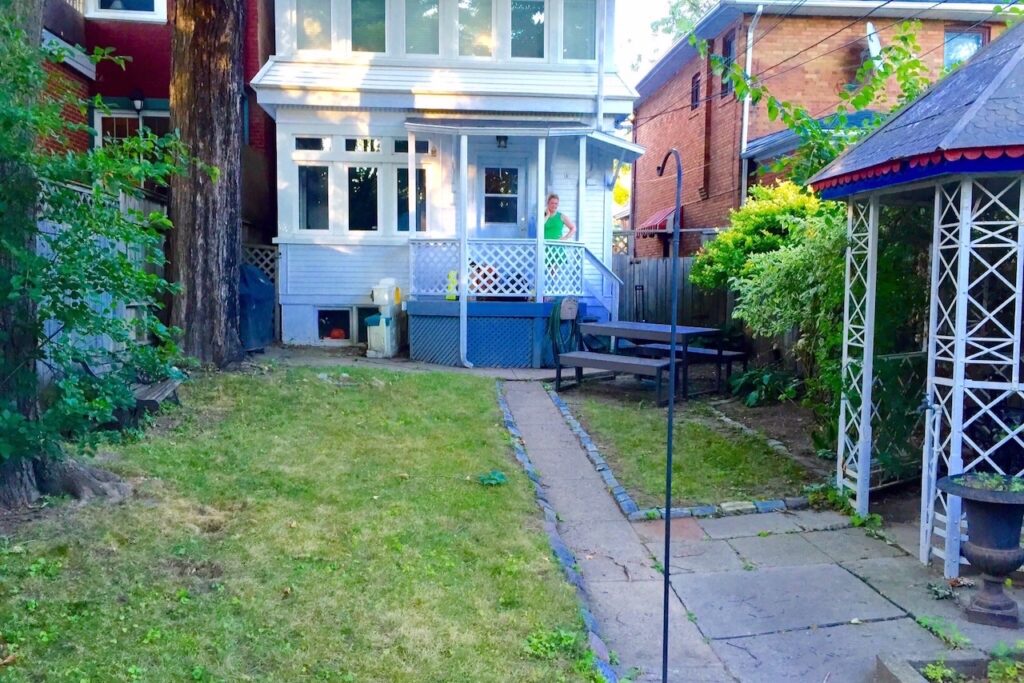
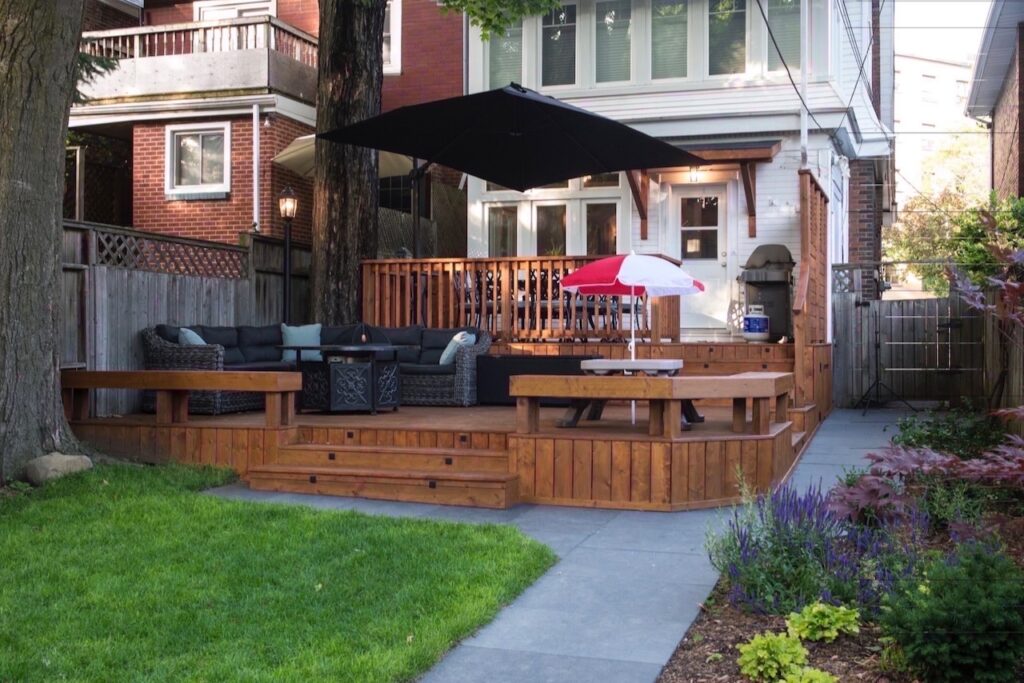
4. Give it a name
Okay, so you’ve got the logistics down, but it’s still not feeling like a third place. I.e., you’re still very much aware that it’s a part of your home.
It’s time to give it a personality of its own.
Giving your third place a name (that’s not just the name of a room in your house) will provide it with an individual identity. Just as naming objects transforms them from soulless items or products into “a life companion”, naming your newly minted area will transform it from a space into a place.
In April 2022, Allie Conti published a story in The Atlantic about how she stumbled upon Mac’s Club, a third place in the middle of a Pennsylvanian suburb:
“On a Sunday last year, I was walking through a suburban neighborhood in Pennsylvania, heading home from an early-afternoon meditation class. One of the nondescript stucco houses had a curious sticker on its mailbox reading Mac’s Club. I checked Google Maps to see if I was standing next to a cleverly disguised business—what might pretentiously be referred to in a city as a speakeasy—but nothing popped up, so I peeked inside the house. That’s where I spotted a pool table and a middle-aged guy sitting at the end of a long, mahogany bar, drinking a Bloody Mary by himself. Apparently, I’d stumbled upon a social club meant for residents of the neighborhood. Though at first the bartender was incredulous that I’d just walked in, he soon rewarded my sense of adventure with a Guinness on the house.
To me, the ideal hangout has a few components: spontaneity, purposelessness, and a willingness among all parties involved to go wherever the conversation leads them. This one met all the criteria.”
However, that doesn’t mean you should sit around waiting for a traveler to walk by and turn your spot into a third place!
After all, even Mac’s Club probably started with a little word of mouth.
5. Tell your community about it!
Send out the invites! Tell your friends, neighbors, and community members about Your Cool New Social Club™.
This is where you really get to decide just how much of your time, energy, and social battery you want to invest in this little side project.
Maybe you’re not ready to open it up for 24/7 socializing.
Maybe you start with a weekly or monthly gathering.
Maybe it’s themed.
Maybe it’s just an extension of your dining table, but without the pressure or frills of a dinner party or fine dining experience.
If you live in a relatively safe community and are open to getting to know your neighbors more, maybe you put up some fliers advertising your monthly night.
Rediscover the joy of collective, spontaneous gathering!
Yes, creating a third place at home will take some time, effort, and money. But giving yourself and your community a space to gather is something you will continue to benefit from in ways that can’t be quantified.
If you’re interested in learning more about third places and why we need them, check out part one here. Or, read about our favorite at-home third place in Toronto—our dear friend Elva’s secret supper club.
What’s your favorite third place?
Let us know in the comments!
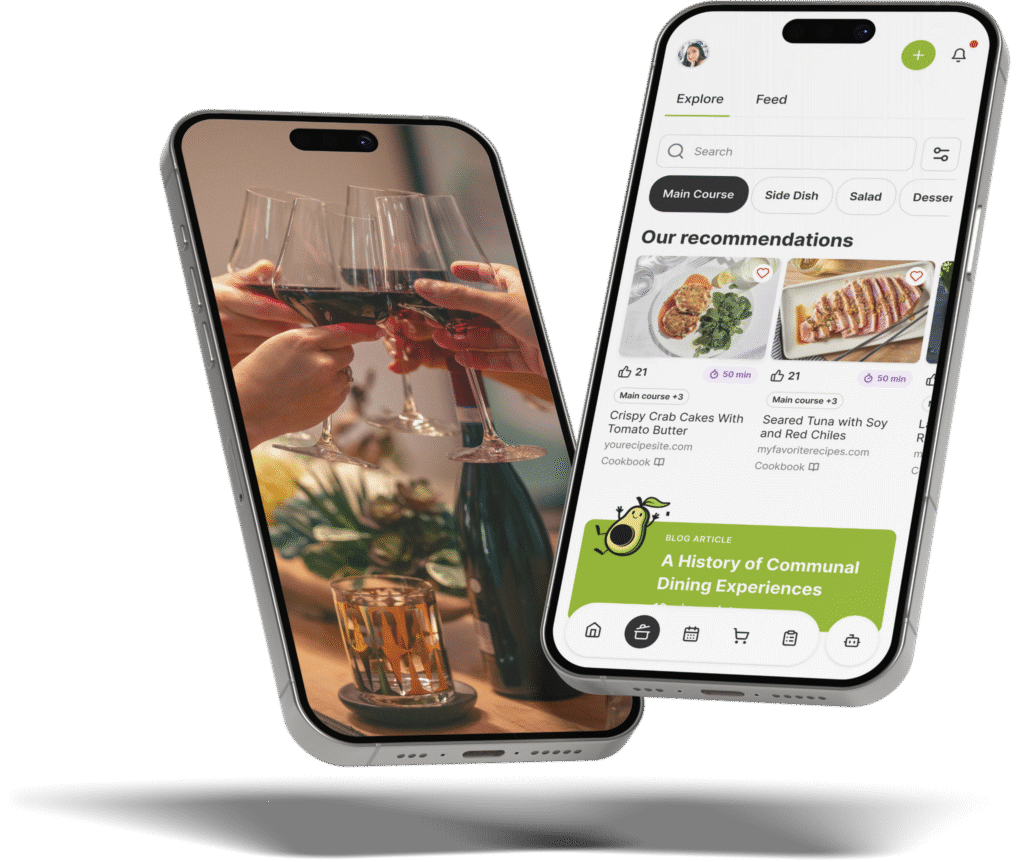


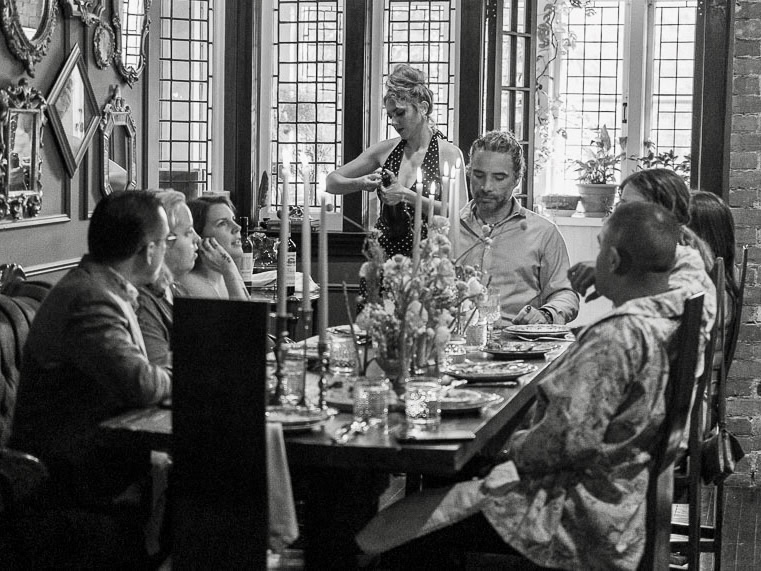










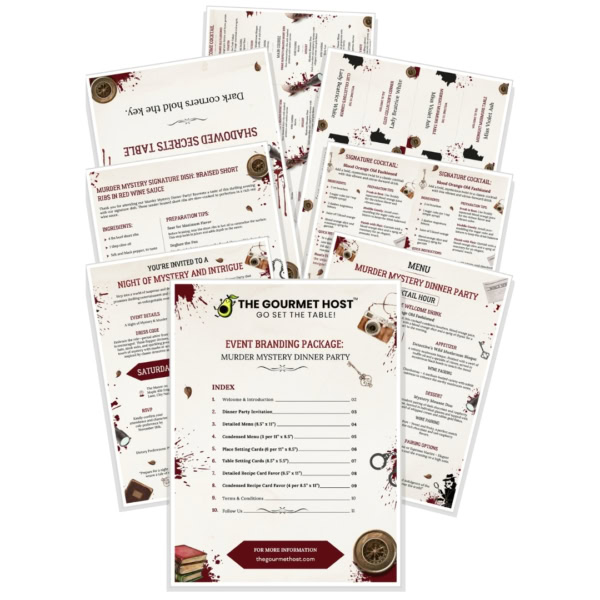
Beautifully said, Johnny, thank you! We are inspired by the passion you bring to your Supper Club projects!
So true about the unlocked potential here. With apps like Peerspace you can find cool places, but nothing beats a home and more specifically one with a host. There’s nothing like being invited to someone’s home. That can’t be replicated by any other commercial 3rd place. I’ve been hosting Supper Clubs for over a year now and I can tell you first hand the magic found within the discovery circle. Great article!